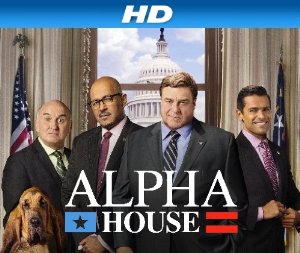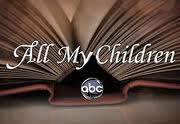The scheme worked. And it’s about to work again, this time in a way that nobody anticipated.
First time out, it was the early 1980s, and the new cable industry was winning a lot of franchises from municipal governments, and making a lot of promises. Among them: all sorts of new television channels. The scheme: customers pay a few dollars each month, and if enough households subscribe, there will be enough money for lots of new television programs. These days, over 100 million subscribers pay over $150 per month—that’s $150,000,000 x 12 months each year, enough money for Comcast to buy NBC and Universal Pictures.

Here comes the next scheme, the next game changer. You’ve probably heard about Amazon Prime’s entry into the television programming space. According to the NY Times, here’s how the process worked:
After an invitation by the company, some 5,000 scripts were submitted last year, and in the spring, 14 pilots were commissioned. Amazon then stood back and watched what 215 million active customers clicked on.
There are no commercials. There is a kind-of, sort-of subscription fee. Amazon is a company that sells a lot of products by mail. They compete with other companies that sell a lot of products by mail. One way to encourage Amazon customer loyalty is with a loyalty program that involves discounts. Amazon’s discount program is called Amazon Prime. You pay $79 per year, and you don’t have to pay for shopping. As an incentive, you can watch a growing number of television shows and movies. Some are free. Most are available pay-per-view for a few dollars.
In days past, television programs were produced to “sell soap.” The commercials paid the cost of operating the network and the cost of producing the program.
Now, television programs are being produced to “pay the shipping cost of the soap.” Somehow, this seems lower on the food chain. Will it work?
 Yup. Why? Because Amazon, and Netflix, and to some extent Hulu, are not carrying 20th century baggage. They operate by analyze the actual viewing habits of real customers. It’s a good model and a not-so-good model. The good: their judgments will be right much more often than they are wrong. And that provides a solid foundation for a business. The not-so-good: gut instinct, loyalty, and softer judgments will ride a rougher road. In an extreme situation, where machines make all of the decisions, there would be no Seinfeld, no situation where an eager program convinced other executives to stick with a show despite its crumby ratings. In real world, that programmer’s ability to persuade will be blunted, not all of the time, but often, because the “data doesn’t lie.”
Yup. Why? Because Amazon, and Netflix, and to some extent Hulu, are not carrying 20th century baggage. They operate by analyze the actual viewing habits of real customers. It’s a good model and a not-so-good model. The good: their judgments will be right much more often than they are wrong. And that provides a solid foundation for a business. The not-so-good: gut instinct, loyalty, and softer judgments will ride a rougher road. In an extreme situation, where machines make all of the decisions, there would be no Seinfeld, no situation where an eager program convinced other executives to stick with a show despite its crumby ratings. In real world, that programmer’s ability to persuade will be blunted, not all of the time, but often, because the “data doesn’t lie.”
Of course, the arguments crumble when the actual process of making television programs enters the argument. Writers don’t much care about data, they care about story. As long as the distribution is reaching a large audience with sufficient promotion, and as long as they are paid a good fee, actors and directors don’t much care about the intricacies of new media distribution. Or do they? That’s the part where the game could change. The economics of Amazon and other data-based program services are vastly different from advertising and subscription models.
Why? Because data-based services do not solely rely upon the old-school revenue streams. Amazon’s game is global branding to drive mail order purchases for every available product in the world to every country in the world. If they need to pay John Goodman a dozen times what NBC would consider reasonable, that’s fine with Amazon. Their purpose changes the economics of the game. And because Amazon and its kin are working with data and operating without the need to fill a 24/7 schedule, they can focus their resources on actual viewing habits, actual consumption patterns, and they can provide producers and writers and directors with moment-by-moment viewer data (when the viewer paused, when the viewer dumped out, how often the viewer re-watched the episode). When creative people learn to use this information in a productive way (imagine the creative battles before all of this settles down), the paradigm will shift, and no film student will graduate without a thorough understanding of data analysis in the creative process.
Armed with endless data, a global marketplace, (effectively) endless cash, and the ability to engage the biggest stars for whatever purpose Amazon deems necessary, the game change is about to begin.
BTW: I thought the Alpha House pilot was very good, entertaining, unpretentious, avoiding the nasty tedium that ultimately limited my fascination with House of Cards. Whether a computer made the judgement, or some clever program executives made it happen, I’ve gotta say “good job.” I look forward to watching the episodes in series, and discovering what else Amazon is unleashing.

 On January 5, 1070, the ABC Television Network debuted a new half-hour soap opera series called All My Children. After seven years, the series was sufficiently popular to win an hour-long time slot. It remained on the air until September 23, 2011, cancelled due to changing audience and lifestyle behaviors.
On January 5, 1070, the ABC Television Network debuted a new half-hour soap opera series called All My Children. After seven years, the series was sufficiently popular to win an hour-long time slot. It remained on the air until September 23, 2011, cancelled due to changing audience and lifestyle behaviors.



